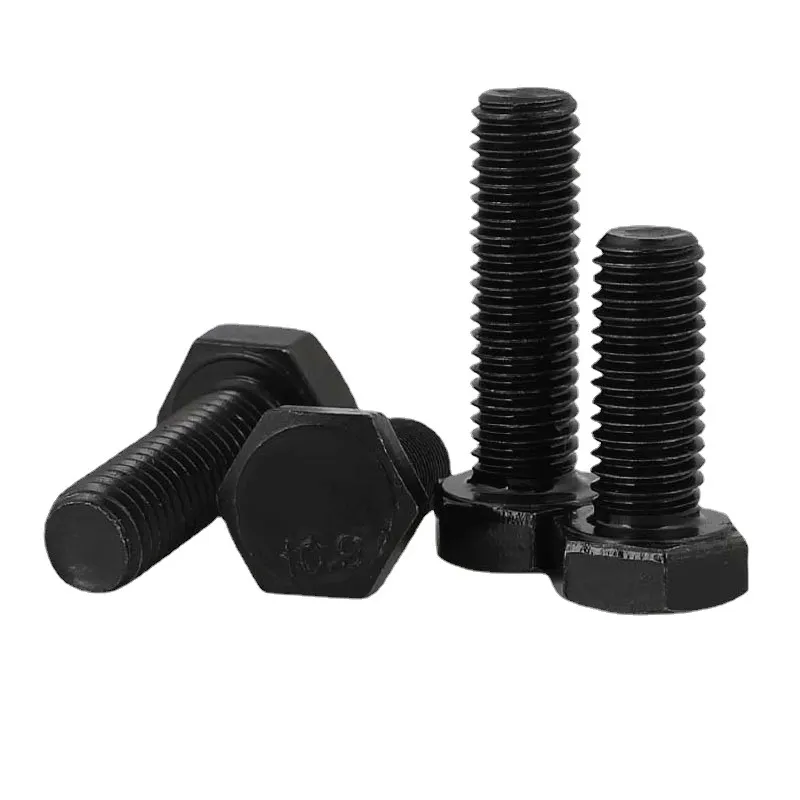

Self Tapping Screws for Metal - Durable & Reliable Fasteners
Sep . 10, 2024 11:44 Back to list
Self Tapping Screws for Metal - Durable & Reliable Fasteners
Self-Tapping Screws in Metal An Essential Guide
Self-tapping screws are pivotal in various applications, especially when fastening materials such as metal. Unlike traditional screws that require a pre-drilled hole, self-tapping screws are designed to create their own holes as they are driven into the material. This unique feature not only simplifies the assembly process but also enhances the structural integrity of the joint, making self-tapping screws an invaluable tool in construction, automotive, and manufacturing industries.
The Mechanism of Self-Tapping Screws
Self-tapping screws are engineered with a sharp point and a thread design that allows them to penetrate metals with ease. These screws come in various styles, but the most commonly used types for metalwork are the thread-cutting screws and the thread-forming screws.
1. Thread-Cutting Screws These screws remove material from the metal as they are driven in. They are typically used for softer metals, allowing for a clean and precise hole without causing deformation.
2. Thread-Forming Screws Unlike their thread-cutting counterparts, thread-forming screws displace the material as they are inserted. They are ideal for harder metals and provide a strong hold as the threads create a tight fit within the pre-formed hole.
Advantages of Using Self-Tapping Screws in Metal
1. Efficiency One of the primary advantages of self-tapping screws is the reduction in labor and time. They eliminate the need for pre-drilling holes, speeding up project completion.
2. Cost-Effectiveness By negating the need for additional tools and equipment, self-tapping screws can significantly reduce project costs. Their ease of use allows for fewer labor resources, further improving overall savings.
3. Versatility Self-tapping screws can be used in a variety of applications, from assembling outdoor structures to connecting automotive parts. Their adaptability makes them suitable for both DIY enthusiasts and industrial applications.
self tapping screws in metal

4. Security The unique design of self-tapping screws provides a secure fastening solution. When properly installed, these screws can withstand vibrations and loads, ensuring durability over time.
Installation Tips
To achieve optimal results when using self-tapping screws in metal, consider the following installation tips
- Material Selection Choose the right type of self-tapping screw based on the metal's hardness and thickness. For softer metals, a thread-cutting screw is recommended, whereas hard metals may require a thread-forming screw.
- Proper Tools Although self-tapping screws can be driven in by hand, using a power drill with the appropriate torque settings can improve efficiency and ensure a more uniform installation.
- Pilot Holes In some cases, particularly with very hard metals, it may be beneficial to drill a small pilot hole to guide the screw and reduce the risk of metal fatigue or cracking.
- Angle and Pressure Maintain an even angle and apply consistent pressure while driving the screw to prevent stripping the threads or damaging the material.
Conclusion
Self-tapping screws are indispensable for metalworking projects, offering a blend of efficiency, cost-effectiveness, and security. Their innovative design allows for quick installation without the need for pre-drilled holes, making them a preferable choice for both professionals and hobbyists. By understanding the different types of self-tapping screws and following best installation practices, users can significantly enhance their fastening operations in metal applications. Whether you're building a tool shed or assembling machinery, self-tapping screws are often the right fit for the job.
Latest news
-
High-Strength Hot-Dip Galvanized Bolts-Hebei Longze|Corrosion Resistance&High Strength
NewsJul.30,2025
-
Hot Dip Galvanized Bolts-Hebei Longze|Corrosion Resistance&High Strength
NewsJul.30,2025
-
Hot Dip Galvanized Bolts - Hebei Longze | Corrosion Resistance, High Strength
NewsJul.30,2025
-
High-Strength Hot Dip Galvanized Bolts-Hebei Longze|Corrosion Resistance, Grade 8.8
NewsJul.30,2025
-
Hot Dip Galvanized Bolts-Hebei Longze|Corrosion Resistance,High Strength
NewsJul.29,2025
-
High-Strength Hot Dip Galvanized Bolts - Hebei Longze Metal Products Manufacturing Co., Ltd.|corrosion resistance&high strength
NewsJul.29,2025

